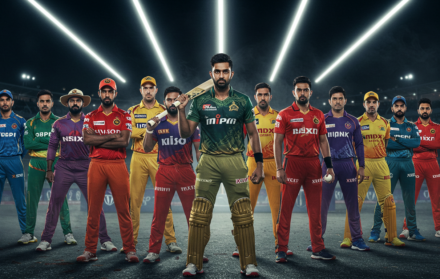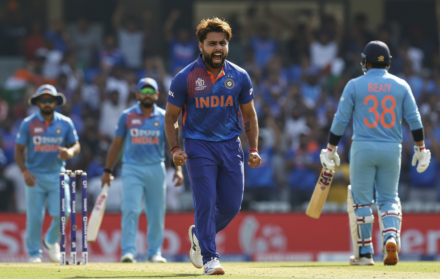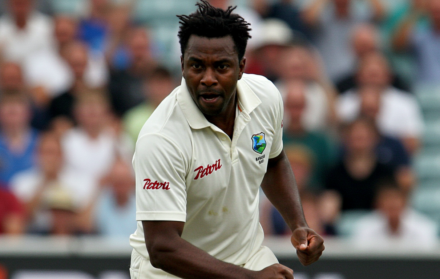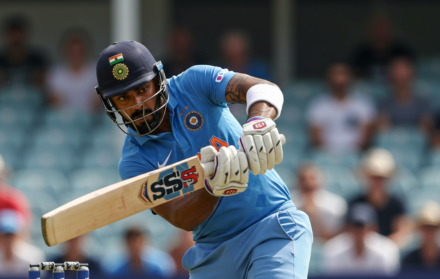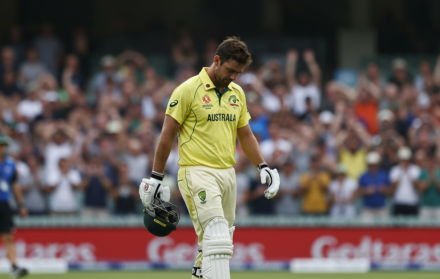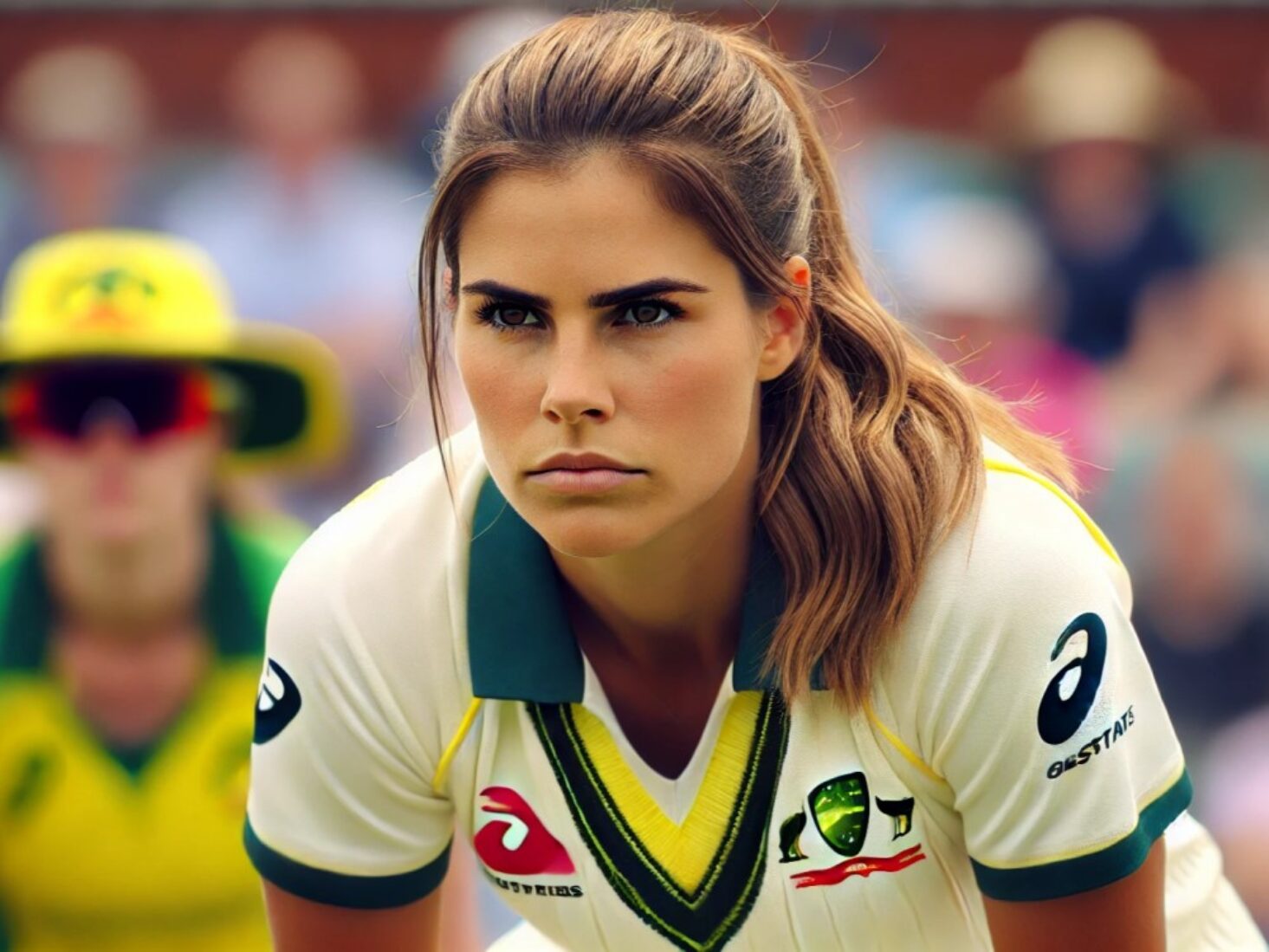
Women’s Cricket and The Future of The Sport
Women’s cricket has been steadily gaining prominence over the years, with increasing support and recognition from fans, organizations, and media. The future of the sport looks bright, as more women are getting involved and excelling at various levels. This article delves into the current state and the promising future of women’s cricket, exploring its achievements, challenges, and the ongoing efforts to promote and enhance the sport.
A significant milestone in the journey of women’s cricket is the remarkable achievements and records set by female cricketers. These accomplishments have not only inspired many young girls to take up the sport but also showcased the immense talent and potential present in women’s cricket. However, the journey has not been without its challenges. Female cricketers have faced numerous challenges, including gender bias, limited resources, and less media coverage compared to their male counterparts.
Efforts to bridge the gap between men’s and women’s cricket are ongoing, with initiatives aimed at achieving gender equality in the sport. These efforts include providing equal opportunities, facilities, and support for female cricketers, and striving to eliminate the gender-based disparities that have historically existed.
The impact of women’s cricket on society is profound. The sport has played a crucial role in empowering women and promoting gender equality. It has also opened up new avenues for sponsorship opportunities, allowing brands to connect with a diverse audience and support the growth of the sport.
The push for equal pay is another critical aspect of the future of women’s cricket. Organizations and advocates are continuously working towards ensuring that female cricketers receive equal pay for their efforts and contributions to the sport. This step is essential in recognizing their dedication and promoting fairness within the cricket community.
Diverse cultures and inclusivity are also integral to the growth of women’s cricket. The sport has become a platform for inclusion and representation, welcoming players from various backgrounds and fostering a sense of unity and diversity.
Moreover, the media plays a vital role in shaping the future of women’s cricket. Increasing media coverage for women’s matches and tournaments can significantly boost the sport’s visibility and popularity. Highlighting the achievements and stories of female cricketers can inspire future generations and encourage more participation.
Finally, the establishment of women’s cricket in major sporting events like the Olympic Games is a testament to the sport’s growing importance. Inclusion in such prestigious events not only elevates the status of women’s cricket but also provides a global platform to showcase the talent and dedication of female cricketers.
Overall, the future of women’s cricket is promising, with ongoing efforts to overcome challenges, promote gender equality, and enhance the sport’s visibility and recognition. As more opportunities and support systems are put in place, women’s cricket is set to reach new heights, inspiring countless young girls to dream big and pursue their passion for the game.
The Evolution of Women’s Cricket
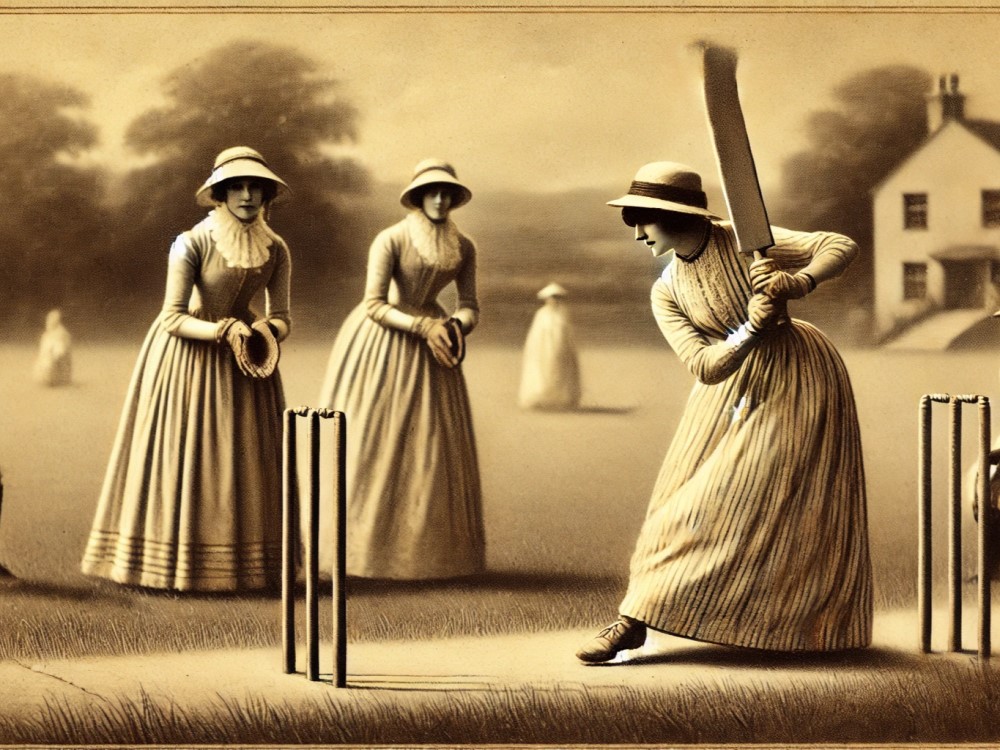
Women’s cricket has a rich history that dates back to the late 18th century. The first recorded women’s cricket match took place in England in 1745, marking the beginning of a sport that would gradually gain recognition and popularity.
The formation of the Women’s Cricket Association (WCA) in 1926 was a significant milestone. The WCA organized domestic competitions and international tours, providing a structured platform for female cricketers. The first Women’s Cricket World Cup was held in 1973, two years before the inaugural men’s tournament, showcasing the growing interest and investment in women’s cricket.
Despite these early developments, women’s cricket faced numerous challenges, including limited funding, media coverage, and professional opportunities. However, the late 20th and early 21st centuries brought significant progress. The International Cricket Council (ICC) took over the governance of women’s cricket in 2005, leading to better resources, support, and promotion.
The rise of T20 cricket has played a crucial role in the sport’s evolution. The shorter format has attracted larger audiences, increased sponsorship deals, and provided more opportunities for women to showcase their skills. The Women’s T20 World Cup, first held in 2009, has become a marquee event, drawing significant viewership and media attention.
In recent years, women’s cricket has seen exponential growth in participation and professionalization. National boards have introduced central contracts for female players, ensuring financial stability and career longevity. Tournaments like the Women’s Big Bash League (WBBL) in Australia and the Kia Super League (KSL) in England have provided a platform for domestic talent to shine and paved the way for other leagues around the world.
The evolution of women’s cricket is marked by perseverance, progress, and passion. The sport has come a long way from its humble beginnings, and the future holds immense potential for further growth and recognition.
Key Players in Women’s Cricket
Several key players have significantly impacted women’s cricket, inspiring future generations and elevating the sport’s profile globally. These athletes have demonstrated exceptional skill, dedication, and sportsmanship, becoming icons in the world of cricket.
Mithali Raj of India is one of the most prominent figures in women’s cricket. As the highest run-scorer in women’s One Day Internationals (ODIs) and the first woman to reach 7,000 ODI runs, Raj has set numerous records throughout her career. Her leadership as the captain of the Indian women’s cricket team has been instrumental in India’s success on the international stage.
Ellyse Perry of Australia is another standout player, known for her exceptional all-round abilities. Perry is the only cricketer, male or female, to have achieved the double of 1,000 runs and 100 wickets in T20 Internationals. Her contributions with both bat and ball have made her one of the most valuable players in the sport.
Sarah Taylor of England is renowned for her wicket-keeping skills and dynamic batting. Taylor has been a crucial player for England, helping the team win multiple ICC Women’s World Cups. Her agility behind the stumps and aggressive batting style have set her apart as one of the best wicket-keepers in women’s cricket history.
Sophie Devine of New Zealand has made her mark as a powerful batter and effective bowler. Devine holds the record for the fastest century in women’s T20 internationals, showcasing her explosive batting capabilities. Her versatility and consistency have been key to New Zealand’s success in international cricket.
Smriti Mandhana of India represents the new generation of women’s cricketers making a significant impact. Mandhana’s elegant batting and ability to score quickly have earned her accolades and a strong fan base. She has been a crucial part of India’s batting lineup, contributing to their victories in major tournaments.
These players, among others, have not only achieved remarkable individual success but have also inspired countless young girls to take up cricket. Their contributions have helped raise the profile of women’s cricket and paved the way for future stars to emerge.
Major Tournaments and Their Impact

Major tournaments have played a pivotal role in the development and popularization of women’s cricket. These events provide a platform for showcasing talent, increasing visibility, and attracting investment and sponsorship.
The ICC Women’s Cricket World Cup is the premier event in women’s cricket, first held in 1973. The tournament has grown in stature and significance over the years, drawing large audiences and media coverage. The World Cup provides a stage for the best teams and players to compete, fostering high levels of competition and skill. The success of the 2017 Women’s World Cup, hosted by England, highlighted the growing interest in women’s cricket, with record attendance and viewership.
The ICC Women’s T20 World Cup, launched in 2009, has become a major highlight in the cricket calendar. The shorter format has proved to be popular with fans, offering fast-paced and exciting matches. The T20 World Cup has helped increase the visibility of women’s cricket and attract new audiences. The 2020 edition, held in Australia, saw record-breaking attendance for the final at the Melbourne Cricket Ground, demonstrating the growing appeal of women’s T20 cricket.
Domestic T20 Leagues like the Women’s Big Bash League (WBBL) in Australia and the Women’s Super League (WSL) in England have significantly impacted women’s cricket. These leagues provide regular competitive cricket for domestic and international players, helping to raise the standard of the game. The WBBL, in particular, has been instrumental in increasing the popularity of women’s cricket, drawing large crowds and significant media coverage.
The Hundred, a new format introduced by the England and Wales Cricket Board (ECB), has also included a women’s competition from its inception. The Hundred aims to bring cricket to a wider audience with its innovative format and family-friendly approach. The inclusion of a women’s competition on equal footing with the men’s has helped promote gender equality in the sport.
These major tournaments and leagues have not only provided a platform for showcasing talent but have also driven significant progress in terms of professionalization and commercialization. Increased media coverage, sponsorship deals, and investment in women’s cricket have resulted in better facilities, coaching, and opportunities for female players.
The impact of these tournaments extends beyond the cricket field, inspiring young girls to take up the sport and changing perceptions about women’s cricket. The success and visibility of these events have played a crucial role in the continued growth and development of women’s cricket globally.
The Role of Media and Sponsorship
Media coverage and sponsorship play a crucial role in the growth and development of women’s cricket. Increased visibility through television broadcasts, online streaming, and social media has helped raise the profile of the sport and attract new fans. Sponsorship deals provide the financial backing needed to support players, teams, and tournaments, ensuring the sustainability and professionalization of women’s cricket.
Historically, women’s cricket received limited media attention compared to men’s cricket. However, this has changed significantly in recent years. Major tournaments like the ICC Women’s World Cup and the Women’s T20 World Cup are now widely broadcast, attracting large audiences and media interest. Domestic leagues such as the WBBL and The Hundred have also garnered substantial coverage, with matches streamed online and broadcast on television.
Social media platforms have played a pivotal role in promoting women’s cricket. Players, teams, and tournaments use social media to engage with fans, share behind-the-scenes content, and provide updates on matches and performances. This direct interaction with fans has helped build a strong and loyal following, further boosting the popularity of the sport.
The increased visibility of women’s cricket has attracted significant sponsorship deals. Major brands are recognizing the value of associating with women’s cricket, leading to increased investment in the sport. Sponsorship deals provide financial support for players, teams, and tournaments, enabling better facilities, coaching, and opportunities.
Companies like Nike, Adidas, and New Balance have sponsored women’s cricket teams and individual players, providing them with top-quality equipment and apparel. These partnerships not only enhance the performance of the players but also promote the sport to a wider audience.
Securing broadcast deals has been crucial for the growth of women’s cricket. Television networks and online streaming services have recognized the demand for women’s cricket and are investing in broadcasting rights. This increased exposure helps attract new fans, increase viewership, and generate revenue for the sport. The role of media and sponsorship extends beyond the professional level, impacting grassroots cricket as well. Increased visibility of women’s cricket inspires young girls to take up the sport, knowing that they have role models to look up to and potential career opportunities. Sponsorship deals often include funding for grassroots programs, ensuring the development of future talent.
The combined impact of media coverage and sponsorship has been transformative for women’s cricket. The increased visibility, financial support, and engagement with fans have helped elevate the sport to new heights. As media and sponsorship continue to grow, the future of women’s cricket looks promising, with more opportunities for players and greater recognition of the sport.
Grassroots Development and Youth Programs

Grassroots development and youth programs are essential for the continued growth and success of women’s cricket. Investing in these areas ensures a steady pipeline of talent, provides opportunities for young girls to learn and play the sport, and fosters a love for cricket from an early age.
Introducing cricket in schools is a fundamental step in grassroots development. Schools can offer cricket as part of their physical education curriculum, providing students with the opportunity to learn the basics of the game. School competitions and tournaments help identify talented players and encourage participation. Collaborations between schools and local cricket clubs can further enhance the development of young cricketers.
Cricket academies play a crucial role in nurturing young talent. These academies provide specialized coaching, facilities, and support to young players, helping them develop their skills and progress in the sport. Many academies offer programs specifically for girls, ensuring they receive the same opportunities as boys. Scholarships and financial assistance can make these programs accessible to talented players from diverse backgrounds.
Local cricket clubs are the backbone of grassroots development. These clubs offer a welcoming environment for young girls to learn and play cricket. Regular training sessions, matches, and tournaments provide valuable experience and help build a strong foundation in the sport. Encouraging girls to join local clubs and participate in mixed or girls-only teams can significantly increase participation rates.
Community-based initiatives can reach a wider audience and promote cricket in underserved areas. Programs that offer free or low-cost coaching, equipment, and facilities can remove barriers to participation. Community events, such as cricket festivals and open days, can attract new players and raise awareness about the sport. Partnerships with local businesses and organizations can provide additional resources and support for these programs.
Creating clear pathways from grassroots to professional cricket is essential for developing future stars. Young players need to see a progression route that leads from school and club cricket to regional and national teams. Talent identification programs, regional academies, and age-group competitions can help identify and nurture promising players. Providing opportunities for young players to train and play with professional teams can further enhance their development.
Having role models and mentors is crucial for inspiring young girls to pursue cricket. Professional players can engage with grassroots programs through coaching clinics, school visits, and community events. Sharing their experiences and providing guidance can motivate young players and instill confidence in their abilities. Mentorship programs can also provide ongoing support and advice, helping young cricketers navigate their journey in the sport.
Investing in grassroots development and youth programs is key to ensuring the long-term success of women’s cricket. By providing opportunities for young girls to learn and play cricket, nurturing talent, and creating clear pathways to professional cricket, the sport can continue to grow and thrive.
The Future of Women’s Cricket
The future of women’s cricket looks bright, with continued growth and development on the horizon. Several factors will shape the future of the sport, including increased investment, professionalization, technological advancements, and global expansion.
Continued investment in women’s cricket is crucial for its future growth. This includes funding for grassroots programs, domestic leagues, and international tournaments. Increased investment ensures better facilities, coaching, and support for players at all levels. Sponsorship deals, broadcast agreements, and partnerships with businesses and organizations can provide the financial backing needed to sustain and grow the sport.
The professionalization of women’s cricket has made significant strides, but there is still room for improvement. Expanding central contracts for players, increasing match fees, and providing better career support can help attract and retain talent. Professionalizing domestic leagues and creating more opportunities for female cricketers to play full-time can further enhance the sport’s profile and competitiveness.
Embracing technological advancements can enhance the experience for players and fans. Innovations such as video analysis, wearable technology, and performance tracking can provide valuable insights for players and coaches. Enhanced broadcasting technologies, virtual reality experiences, and interactive platforms can engage fans and attract new audiences. Leveraging technology to improve the quality of play and the fan experience will be key to the future of women’s cricket.
Expanding women’s cricket globally is essential for its growth. Developing cricket in non-traditional markets and supporting emerging cricket nations can increase participation and competition. Global tournaments, international tours, and bilateral series can help promote the sport and provide opportunities for players from different countries to compete at the highest level. Expanding the reach of women’s cricket ensures a more diverse and competitive landscape.
Promoting gender equality and inclusivity is vital for the future of women’s cricket. Ensuring equal opportunities, resources, and recognition for female players is essential. This includes addressing disparities in pay, facilities, and media coverage. Creating an inclusive environment that welcomes players from diverse backgrounds and cultures will help grow the sport and attract a wider audience.
Sustainable growth is key to ensuring the long-term success of women’s cricket. This involves balancing commercial interests with the development of the sport at all levels. Protecting the welfare of players, promoting ethical practices, and investing in the future of the sport are essential for sustainable growth. Collaborative efforts between governing bodies, stakeholders, and the cricket community will be crucial in achieving this goal.
The future of women’s cricket holds immense potential, with opportunities for continued growth and development. By investing in the sport, embracing technological advancements, promoting equality, and expanding globally, women’s cricket can reach new heights and inspire future generations of players and fans.
The Bright Future of Women’s Cricket: A Journey of Growth and Empowerment

Women’s cricket has made remarkable progress over the years, evolving into a dynamic and competitive sport that continues to grow in popularity. The dedication and achievements of key players, the impact of major tournaments, the role of media and sponsorship, and the investment in grassroots development have all contributed to the sport’s success.
Key players in women’s cricket have not only showcased exceptional talent and skill but have also become role models for aspiring athletes. Their achievements on the field have raised the profile of the sport and demonstrated that women’s cricket can be just as thrilling and competitive as men’s. Major tournaments have played a crucial role in this evolution, providing a platform for women cricketers to shine and for fans to witness high-quality cricket on an international stage.
The role of media and sponsorship has been instrumental in elevating women’s cricket. Increased media coverage has brought greater visibility to the sport, attracting new fans and generating widespread interest. Sponsorship deals have provided essential financial support, enabling better training facilities, higher player salaries, and more professional opportunities for female cricketers.
Investment in grassroots development is another key factor driving the growth of women’s cricket. Programs aimed at nurturing young talent and providing opportunities for girls to play cricket from a young age are crucial for the sport’s long-term sustainability. These initiatives ensure a steady pipeline of skilled players who can contribute to the future success of women’s cricket.
The future of women’s cricket is bright, with continued growth and development on the horizon. Increased investment in the sport will lead to further professionalization, ensuring that women cricketers receive the same level of support and opportunities as their male counterparts. Technological advancements will enhance training and performance analysis, helping players reach their full potential.
Global expansion is also on the agenda, with efforts to promote women’s cricket in regions where it is less established. This will not only broaden the sport’s fan base but also provide opportunities for women in these areas to pursue cricket professionally. A focus on equality and inclusivity will be paramount, ensuring that the sport remains accessible to all and continues to break down barriers.
As women’s cricket continues to thrive, it will inspire and empower future generations of female cricketers, ensuring a vibrant and exciting future for the sport. The progress made so far is just the beginning, and with sustained efforts, women’s cricket will reach even greater heights, becoming a beacon of empowerment and excellence in the sporting world. The journey of women’s cricket is a testament to the power of dedication, talent, and the relentless pursuit of equality, promising a future filled with promise and potential.
